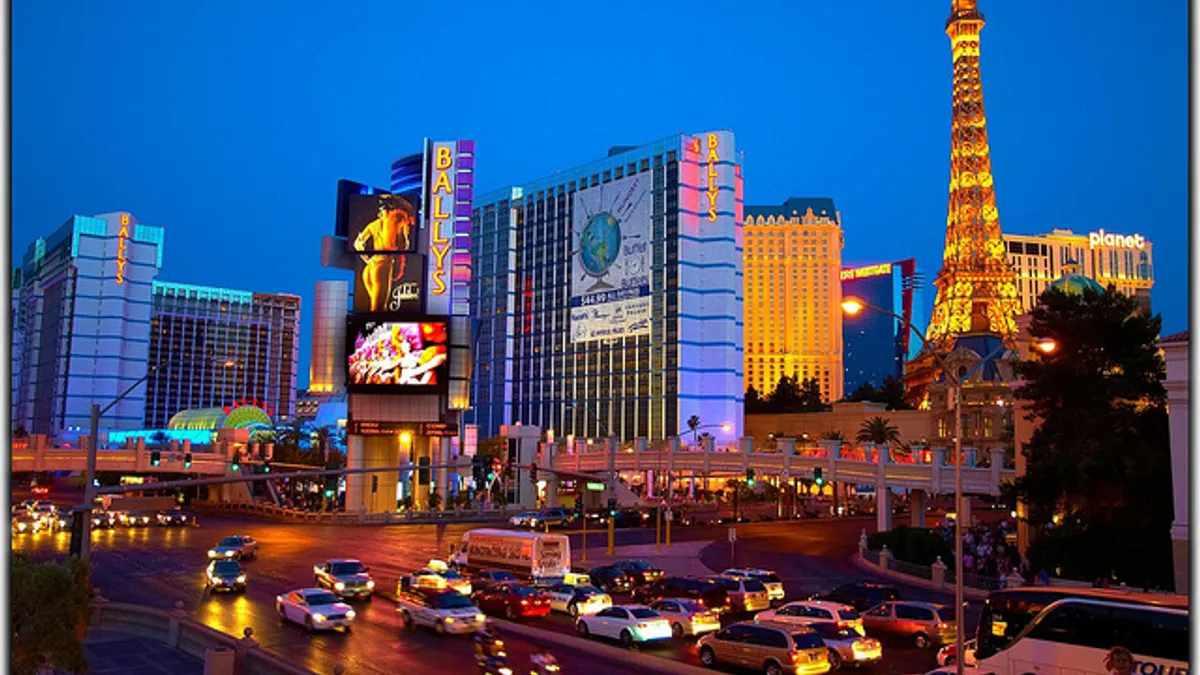Dive Brief:
- With the activation of the Boulder Solar 1 array in December, the Las Vegas city government is now entirely powered by renewable solar and hydroelectric energy, according to Quartz.
- Energy efficiency savings and reduced costs are expected to save the city $5 million per year to power 140 buildings and the city’s streetlight network.
- Major Las Vegas casinos are following suit by installing rooftop solar arrays even as a rate change for solar customers by the Public Utilities Commission has placed significant pressure on the future of solar power in Nevada.
Dive Insight:
Although it’s only the municipal properties within Las Vegas, and not the entire city, that has reached the 100% renewable energy threshold, the impressive effort was 10 years in the making. Natural gas and coal-fired power plants still contribute the lion’s share of the city’s energy consumption, and, as a result, Las Vegas has a ways to go before becoming completely carbon-free. That said, renewable energy advocates are hoping the city’s deal with NV Energy will be a tipping point in Nevada’s much publicized struggle to incorporate solar power into the state’s energy mix.
Even if some pundits question the future of similar power purchase agreements to help finance large, grid-scale solar arrays, the push to achieve 100% renewable energy-powered cities is likely to continue. In late November, mayors of 51 major U.S. cities sent an open letter to President-elect Donald Trump committing to renewable energy as part of their effort to offset climate change, with or without federal assistance.
The construction industry is a major player in the sustainable movement, as buildings account for one-third of the world's emissions, according to the U.S. Green Building Council. In an update on its 2030 Commitment Initiative to reduce energy-use intensity, the American Institute of Architects noted that only 4% of projects achieved the 70% energy-savings goal by 2015, which was set to help the built environment attain carbon neutrality by 2030. The average energy savings was instead only 38%.













